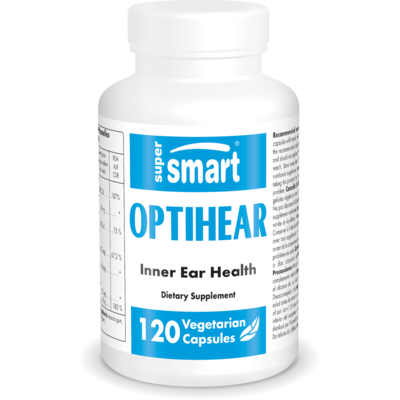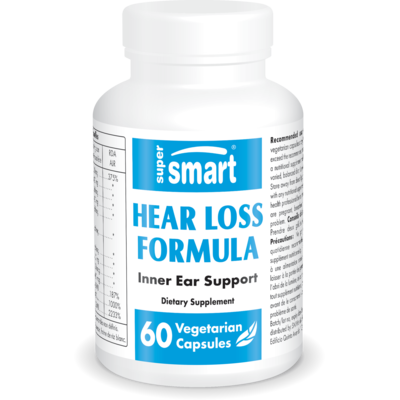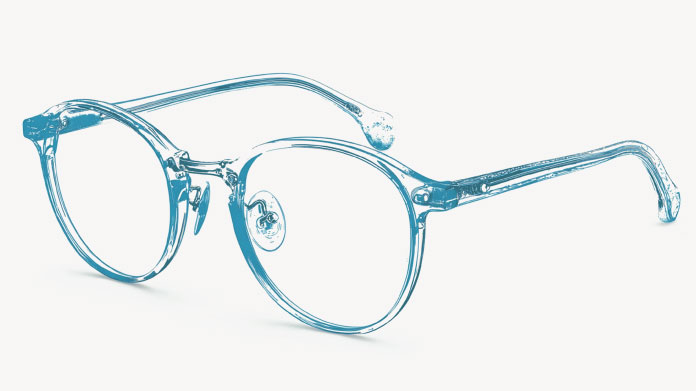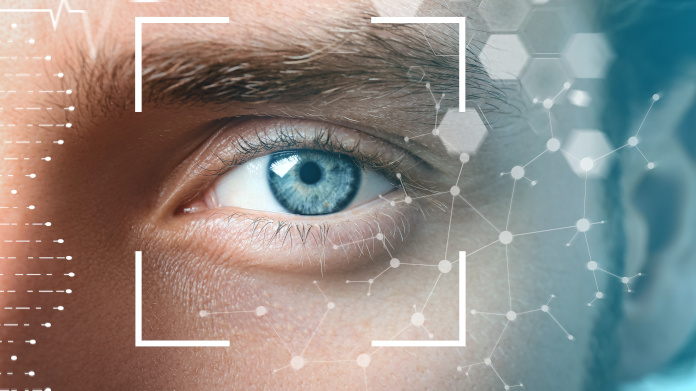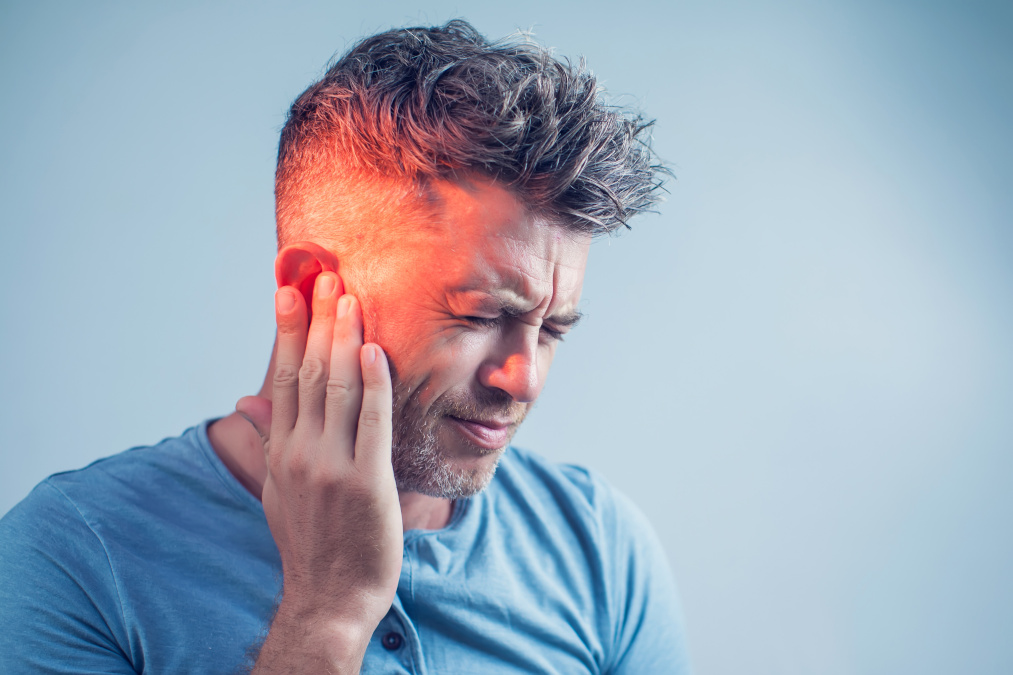Is it dangerous to sleep with earphones in?
Many of us like to drop off listening to a podcast or some music. But is falling into a deep sleep wearing earbuds really a good idea?
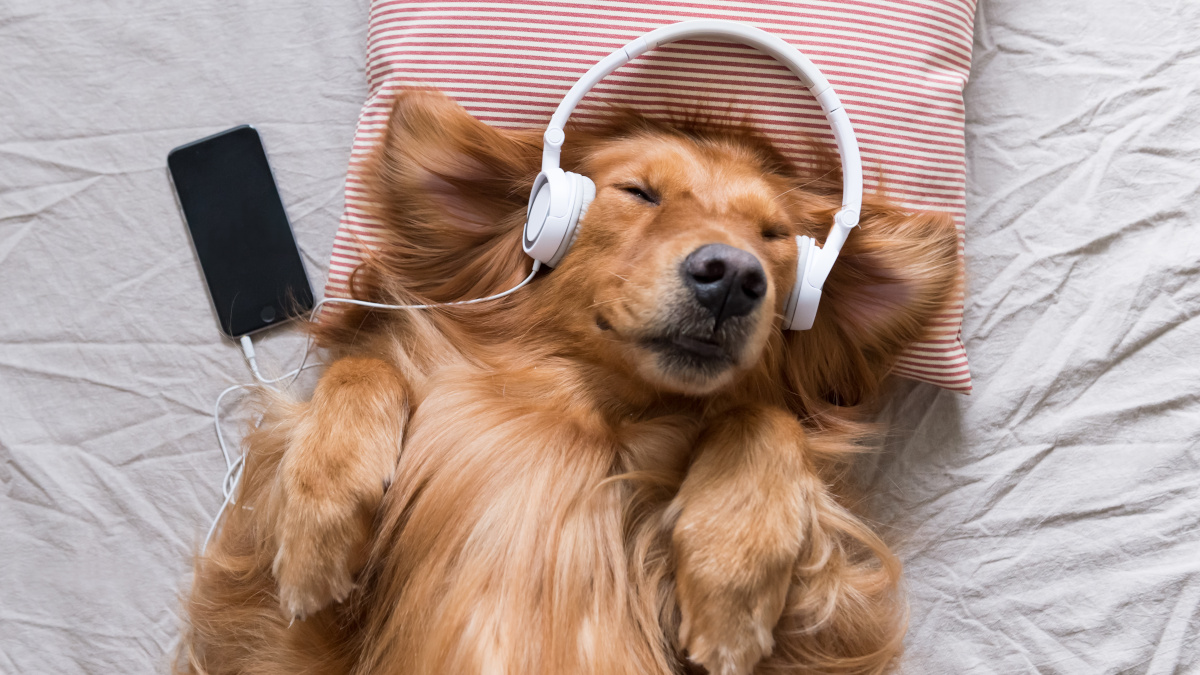
Falling asleep wearing earphones: a risky practice?
Though we may like to be rocked off to sleep by our favorite hit songs, sleeping with earbuds in is not necessarily a good habit to get into for several reasons.
Firstly, listening to all kinds of sounds throughout the night (even at low volume) increases the risk of hearing problems (1). This is not only due to the prolonged listening period but also to increased fragility of our eardrums: as blood flow decreases when we’re asleep, the ears are less resistant to noise disturbance. This can result in premature hearing loss as well as ringing or buzzing in the ears (tinnitus) (2).
Since music is known to reduce feelings of stress, it should logically make it easier to fall asleep. Paradoxically however, several studies have shown that playing your favorite playlist just before you drop off leads to worse-quality sleep.
This is because of involuntary musical imagery, better known as ‘earworms’ (3-4). In other words, a particular song remains stuck in your head, to the point where it’s still playing on a loop when you wake up. This problem is more likely to occur when attention is lower (as in the evening).
These nocturnal earworms can be quite invasive, potentially extending the time it takes to fall asleep, causing more wakefulness during the night and destabilizing the sleep cycle (with a shift from deep sleep to lighter sleep).
There are various reports, which although exceptional, also give pause for thought. A case of fatal electrocution was reported in a Malaysian teenager who had fallen asleep wearing his earbuds plugged into his phone on charge. Another young man, wearing Apple’s famous AirPods, accidentally swallowed one of his wireless earbuds during the night (his smartphone located it in his stomach in the early hours). Fortunately, he was none the worse after it passed through his system with the aid of laxatives.
Last but not least, there’s a continuing debate around the impact of wireless technologies on health. While no scientific study has so far established a link between radio waves (such as Bluetooth) and brain or acoustic nerve tumors, the theory has not been completely rejected due to the proximity of the earphones to the auditory canal (5-7).
Natural tips for maintaining your hearing
To take care of your ears and keep your hearing sharp, it’s a good idea to adopt a few common-sense measures:
- protect your ears with earplugs or noise-cancelling headphones when you find yourself in a very noisy environment (building sites, concerts …) (8);
- turn down the volume on your earbuds or headphones (< to 80 dB or 60% of their maximum volume) and use them less frequently if possible (9) ;
- don’t clean inside your ear canal, as earwax will get rid of any impurities. Cotton buds should be reserved for external use only (for cleaning visible parts of the ear) to avoid perforating your eardrum and damaging your hearing (10) ;
- keep your ears warm and dry by covering them with a hat or ear-muffs in cold, windy weather. A drop in temperature, moisture and wind may all increase the risk of exostosis (excess bone growth in the ear canal) which can lead to hearing loss (11). Sportspeople who have to deal with water and wind are more exposed to this.
To curb hearing loss, it’s also wise to adopt a diet rich in antioxidants (red berries, green and orange vegetables, tea, cocoa …), as well as in vitamins C (citrus fruit, peppers, kiwi fruit…) and E (vegetable oils, almonds …) which help fight oxidative stress (12). These will counteract the harmful effects of free radicals on the hair cells of the inner ear, which are crucial to sound perception.
In addition, magnesium appears to be closely linked to glutathione, a powerful cellular shield (particularly auditory cells) (13). It also supports normal nervous system function by mediating the transmission of sound signals via the auditory nerve (14). To ensure a good intake, focus on whole grains, nuts and dark chocolate.
Certain plants can also boost auditory protection by addressing the vascular component in order to improve oxygenation of ear tissue. One such plant is gingko biloba, also known as the ‘tree of the 40 shields’, which helps maintain good peripheral circulation and especially auditory health (15). It can be found in targeted synergistic supplements (the comprehensive formulation Hear Loss Formula contains gingko, magnesium, vitamins D and E as well as cutting-edge compounds such as alpha-lipoic acid and quercetin) (16-17).
Less well-known, the lesser periwinkle (Vinca minor) helps maintain good mental health, especially in elderly individuals, due to its content of vincamine, an alkaloid effective at oxygenating the brain. Its effects on microcirculation have attracted so much scientific interest that it now features in supplements targeted at auditory health (like the natural formulation OptiHear, in which it’s combined with gingko and zinc for enhanced efficacy at fighting oxidative stress in ear cells) (19).
SuperSmart ADVICE
References
- Byeon H. Associations between adolescents' earphone usage in noisy environments, hearing loss, and self-reported hearing problems in a nationally representative sample of South Korean middle and high school students. Medicine (Baltimore). 2021 Jan 22;100(3):e24056. doi: 10.1097/MD.0000000000024056. PMID: 33546006; PMCID: PMC7837842.
- Choi JH, Park SS, Kim SY. Associations of Earphone Use with Tinnitus and Anxiety/Depression. Noise Health. 2021 Oct-Dec;23(111):108-116. doi: 10.4103/nah.NAH_48_20. PMID: 34975126; PMCID: PMC8772443.
- Scullin MK, Gao C, Fillmore P. Bedtime Music, Involuntary Musical Imagery, and Sleep. Psychol Sci. 2021 Jul;32(7):985-997. doi: 10.1177/0956797621989724. Epub 2021 Jun 9. PMID: 34105416; PMCID: PMC8641138.
- Euser AM, Oosterhoff M, van Balkom I. Stuck song syndrome: musical obsessions - when to look for OCD. Br J Gen Pract. 2016 Feb;66(643):90. doi: 10.3399/bjgp16X683629. PMID: 26823252; PMCID: PMC4723199.
- Repacholi MH, Lerchl A, Röösli M, Sienkiewicz Z, Auvinen A, Breckenkamp J, d'Inzeo G, Elliott P, Frei P, Heinrich S, Lagroye I, Lahkola A, McCormick DL, Thomas S, Vecchia P. Systematic review of wireless phone use and brain cancer and other head tumors. Bioelectromagnetics. 2012 Apr;33(3):187-206. doi: 10.1002/bem.20716. Epub 2011 Oct 21. PMID: 22021071.
- Mandalà M, Colletti V, Sacchetto L, Manganotti P, Ramat S, Marcocci A, Colletti L. Effect of Bluetooth headset and mobile phone electromagnetic fields on the human auditory nerve. 2014 Jan;124(1):255-9. doi: 10.1002/lary.24103. Epub 2013 Apr 25. PMID: 23619813.
- Miller AB, Sears ME, Morgan LL, Davis DL, Hardell L, Oremus M, Soskolne CL. Risks to Health and Well-Being From Radio-Frequency Radiation Emitted by Cell Phones and Other Wireless Devices. Front Public Health. 2019 Aug 13;7:223. doi: 10.3389/fpubh.2019.00223. PMID: 31457001; PMCID: PMC6701402.
- Kwak C, Han W. The Effectiveness of Hearing Protection Devices: A Systematic Review and Meta-Analysis. Int J Environ Res Public Health. 2021 Nov 7;18(21):11693. doi: 10.3390/ijerph182111693. PMID: 34770206; PMCID: PMC8583416.
- Widen SE, Båsjö S, Möller C, Kähäri K. Headphone listening habits and hearing thresholds in swedish adolescents. Noise Health. 2017 May-Jun;19(88):125-132. doi: 10.4103/nah.NAH_65_16. PMID: 28615542; PMCID: PMC5501022.
- Hobson JC, Lavy JA. Use and abuse of cotton buds. J R Soc Med. 2005 Aug;98(8):360-1. doi: 10.1177/014107680509800808. PMID: 16055901; PMCID: PMC1181836.
- Landefeld K, Bart RM, Lau H, et al. Surfer's Ear. [Updated 2022 Aug 10]. In: StatPearls [Internet]. Treasure Island (FL): StatPearls Publishing; 2022 Jan-. Available from: https://www.ncbi.nlm.nih.gov/books/NBK534874/
- Petridou AI, Zagora ET, Petridis P, Korres GS, Gazouli M, Xenelis I, Kyrodimos E, Kontothanasi G, Kaliora AC. The Effect of Antioxidant Supplementation in Patients with Tinnitus and Normal Hearing or Hearing Loss: A Randomized, Double-Blind, Placebo Controlled Trial. 2019 Dec 12;11(12):3037. doi: 10.3390/nu11123037. PMID: 31842394; PMCID: PMC6950042.
- Regan RF, Guo Y. Magnesium deprivation decreases cellular reduced glutathione and causes oxidative neuronal death in murine cortical cultures. Brain Res. 2001 Jan 26;890(1):177-83. doi: 10.1016/s0006-8993(00)03156-5. PMID: 11164781.
- Sendowski I, Holy X, Raffin F, et al. Magnesium and hearing loss. In: Vink R, Nechifor M, editors. Magnesium in the Central Nervous System [Internet]. Adelaide (AU): University of Adelaide Press; 2011. Available from: https://www.ncbi.nlm.nih.gov/books/NBK507266/
- von Boetticher A. Ginkgo biloba extract in the treatment of tinnitus: a systematic review. Neuropsychiatr Dis Treat. 2011;7:441-7. doi: 10.2147/NDT.S22793. Epub 2011 Jul 28. PMID: 21857784; PMCID: PMC3157487.
- Quaranta N, Dicorato A, Matera V, D'Elia A, Quaranta A. The effect of alpha-lipoic acid on temporary threshold shift in humans: a preliminary study. Acta Otorhinolaryngol Ital. 2012 Dec;32(6):380-5. PMID: 23349557; PMCID: PMC3552536.
- Ma YK, Chen YB, Li P. Quercetin inhibits NTHi-triggered CXCR4 activation through suppressing IKKα/NF-κB and MAPK signaling pathways in otitis media. Int J Mol Med. 2018 Jul;42(1):248-258. doi: 10.3892/ijmm.2018.3577. Epub 2018 Mar 20. PMID: 29568908; PMCID: PMC5979834.
- Hussain G, Rasul A, Anwar H, Aziz N, Razzaq A, Wei W, Ali M, Li J, Li X. Role of Plant Derived Alkaloids and Their Mechanism in Neurodegenerative Disorders. Int J Biol Sci. 2018 Mar 9;14(3):341-357. doi: 10.7150/ijbs.23247. PMID: 29559851; PMCID: PMC5859479.
- Li Y, Zou Q, Zhang J. Vincamine exerts protective effect on spiral ganglion neurons in endolymphatic hydrops guinea pig models. Am J Transl Res. 2018 Nov 15;10(11):3650-3663. PMID: 30662616; PMCID: PMC6291722.
Keywords
4 Days
Great customer service - responsive …
I ordered from them and my item was unavailable for sometime. I was super happy when they reactivated my order and shipped my item which arrived very quickly. Great customer service.
Ruth Rueter
5 Days
Super fast shipping
Super fast shipping
Donald Borling
8 Days
Reputable companysearch and the number of…
The research and the number of selection of products.
NAKHJAVAN Shervin
21 Days
The Anti Aromatase is a great product
The Anti Aromatase is a great product. You just need to have constant inventory. Recently this product has been out of stock.
GEORGE Verne
22 Days
Great help on chat
Great help on chat. Knowledgeable and friendly.
Jason Argos
26 Days
Customer service was fast and friendly.
Customer service helped to stop the transaction process of the subscription. I appreciated that.
Greenie
26 Days
I order here due to the high quality of…
I order here due to the high quality of the products and the quick delivery of items - thank you
Barbara J
27 Days
SuperSmart's Eye Pressure supplements: highly recommended!
I purchase SuperSmart's Eye Pressure supplements regularly for over 5 years, and gotta say they are truly a wonderful product for my Glaucoma. Highly recommended if you have eye pain from your Glaucoma.
D. Martinez
32 Days
Quick service
Quick service
MONELL
33 Days
Speedy service.
Speedy service.
ROSENTHAL Marvin
36 Days
Clear website- Efficient
Clear website. Excellent search engine and fast delivery!
Mohamad Hussein
39 Days
They have great products.
They have great products.
Vickie
39 Days
Great Shipping Time!
You Have A Great Shipping Time! Praise The Lord!
DMHoge
41 Days
Doctor Recommended!
Good pricing, very good availability, doctor recommended (couldn't find what I needed anywhere else), and it took only a week to arrive (which I can't complain about).
Al
42 Days
Great product and fast shipping
Great product and fast shipping
Marie

